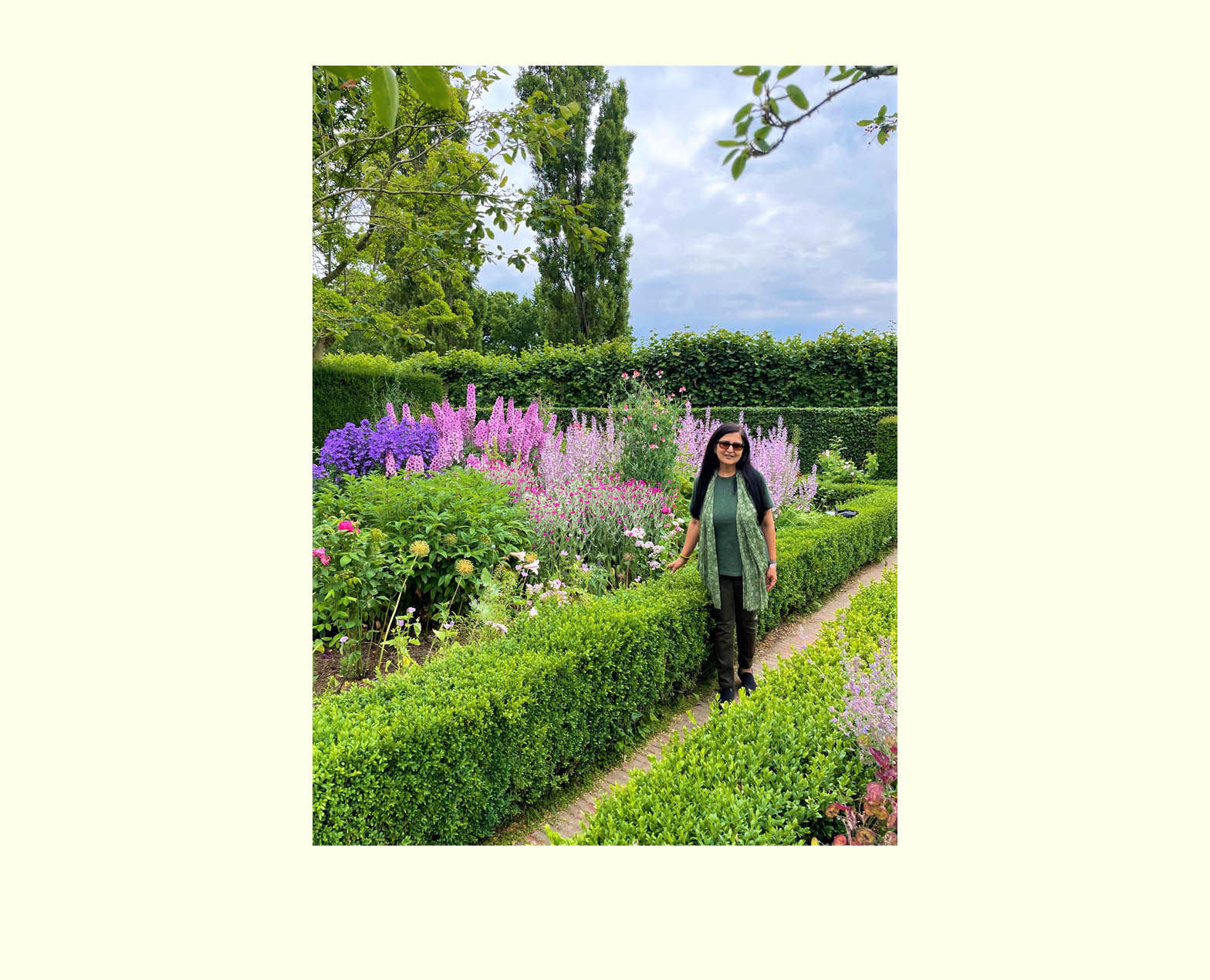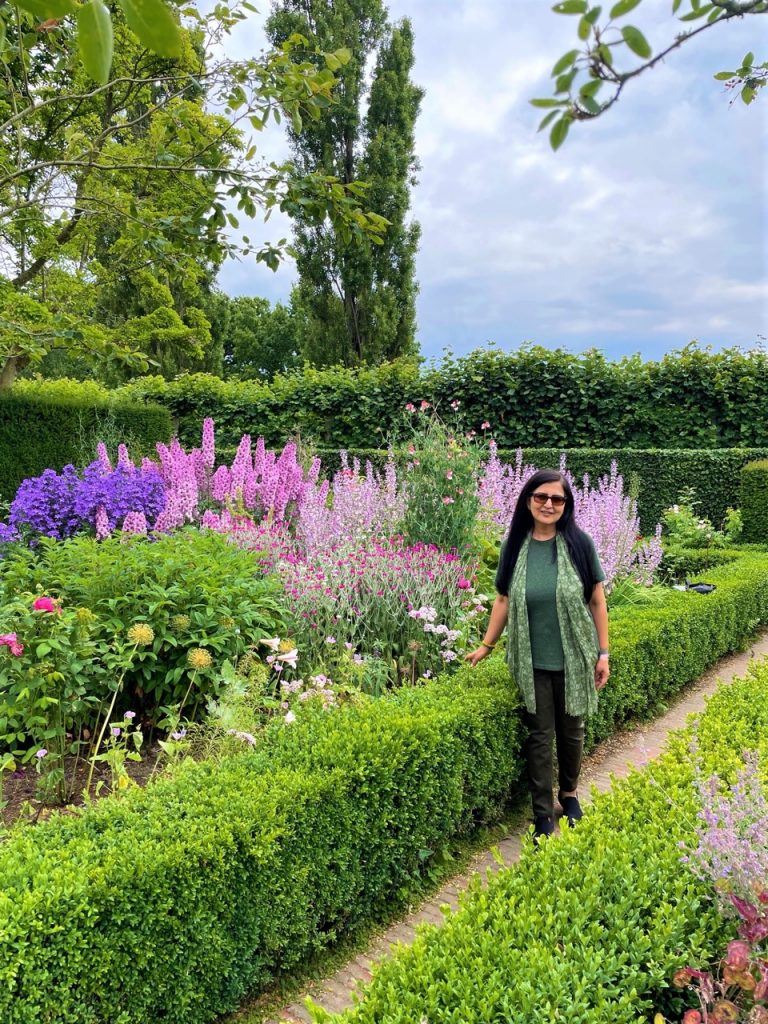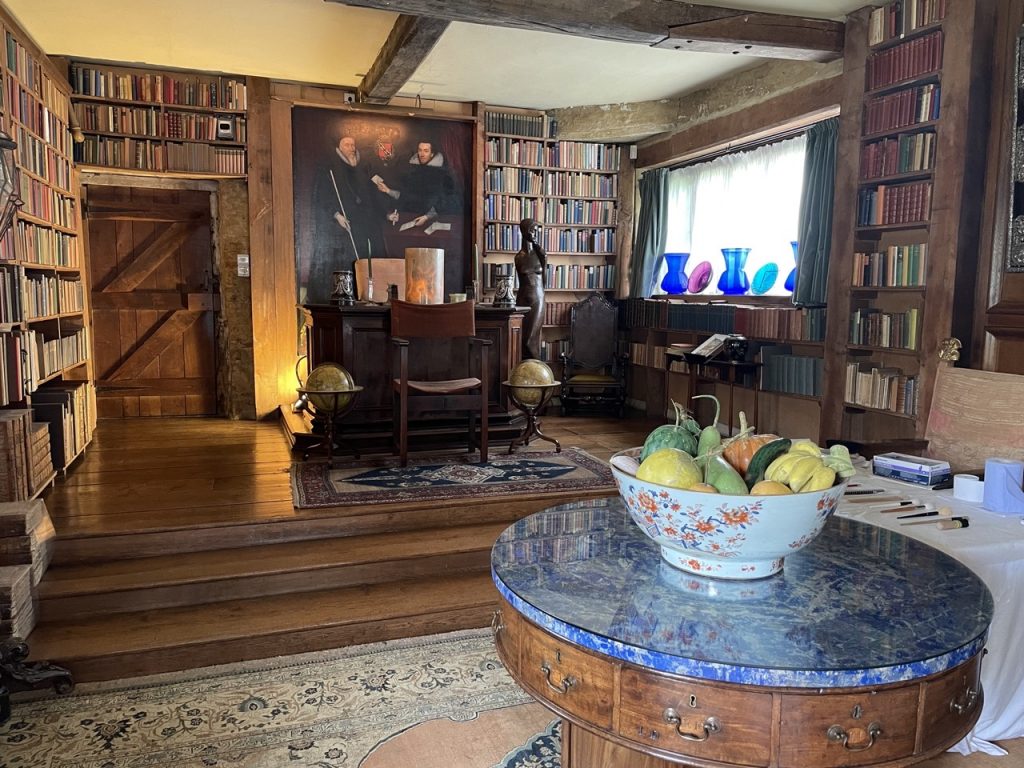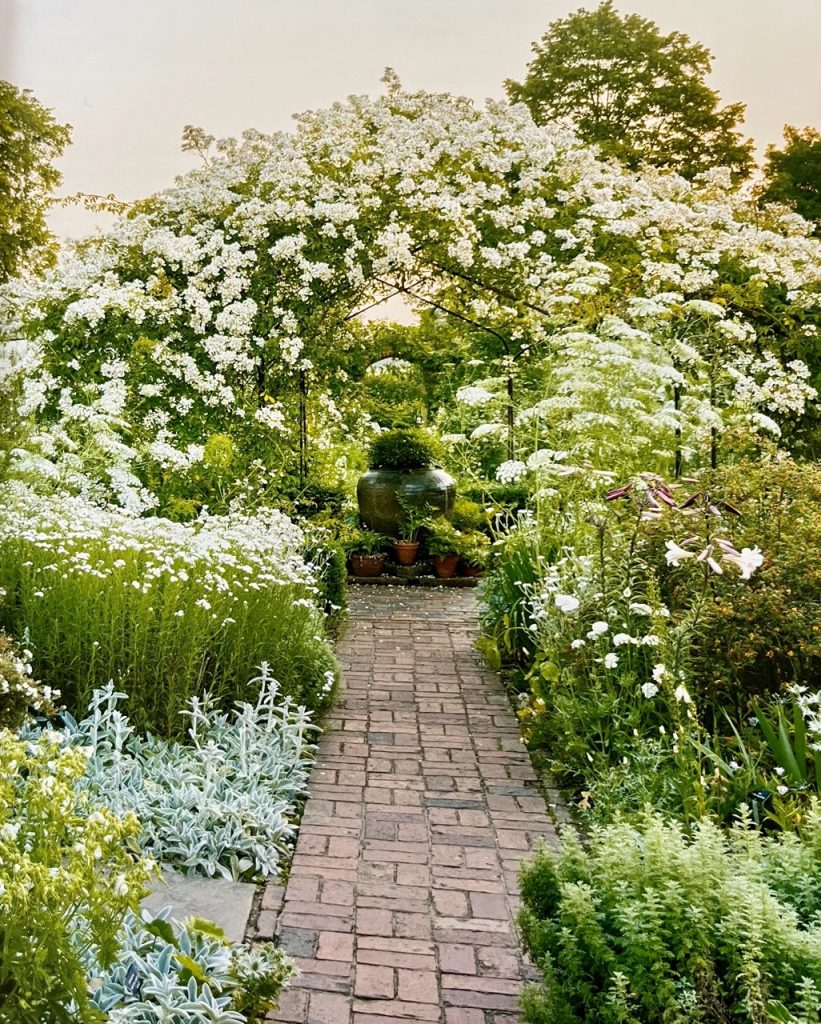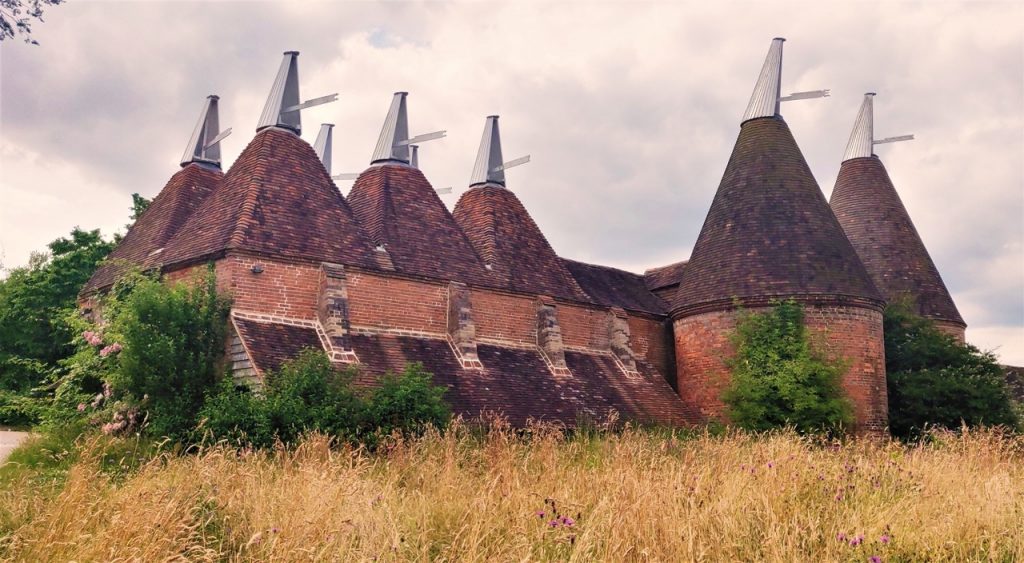The Enchanting Beauty of Sissinghurst Castle and Gardens- a Journey from the 16th to 21st Century – Part 3
From Stone age to a history of 3000 years was enough reason to explore ‘whatever was left’ of the ‘Manor House with a moat’ belonging to Saxingherstes family of 5 AD and no wonder that the present day name still has a ring to it! We were at the beautiful Sissinghurst Castle Gardens, enveloped in acres of greenery in Kent, England.
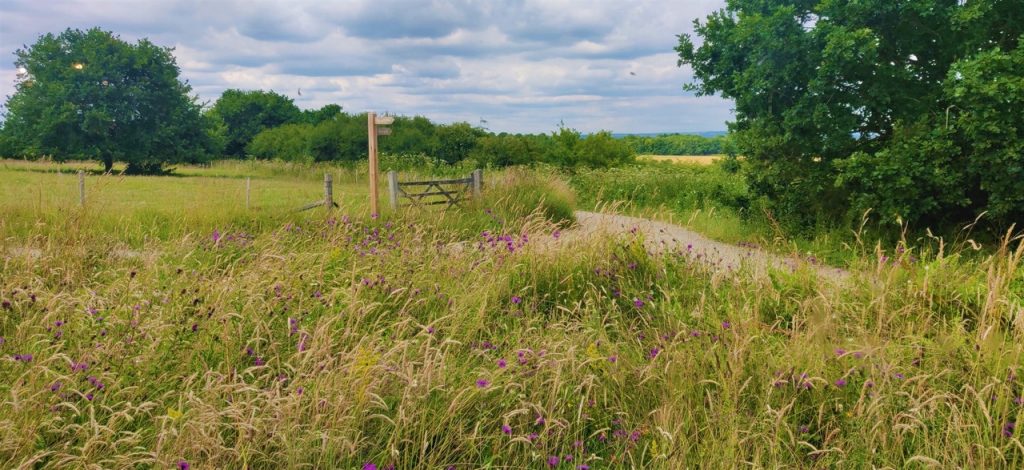
The 100’s of years old Estate Walk spread over acres around Sissinghurst Castle Gardens in Autumn Large
We looked around and noticed that there was no Castle actually, just a name. The reason being that by the end of the 16th century the wealthy Baker family build a magnificent courtyard Home that was leased to the government during the Seven Year War and was transformed into a jail for 3000 French prisoners; which soldiers mockingly referred to as their ‘Chateau de Sissinghurst or the Sissinghurst Castle’ and ironically the name struck on!!
Vita and Harold Nicholson’s 20th century Sissinghurst Castle Gardens
After 300 years of decay and fluctuating ownerships; a couple Vita-Sackville- West and Harold Nicholson bought the semi –ruins in 1930’s and they transformed the ruins to fine liveable family units connected by manicured gardens and kaleidoscope of flowers beds, vines & bushes.
Earlier we had discovered the spectacular beauty of flower filled, green sheets look gardens of the Sissinghurst Castle with the, 78 Steps majestic Tower once ascended by Queen Elizabeth 1, the Tower Lawns, Yew-tree-Walk, restored South Cottage, ancient site of Greek Delos recreated fondly, the tranquil White Garden , the dramatic Purple Border – all slices of splendour created from ruins!
The Long Library- Once a beautiful Drawing Room
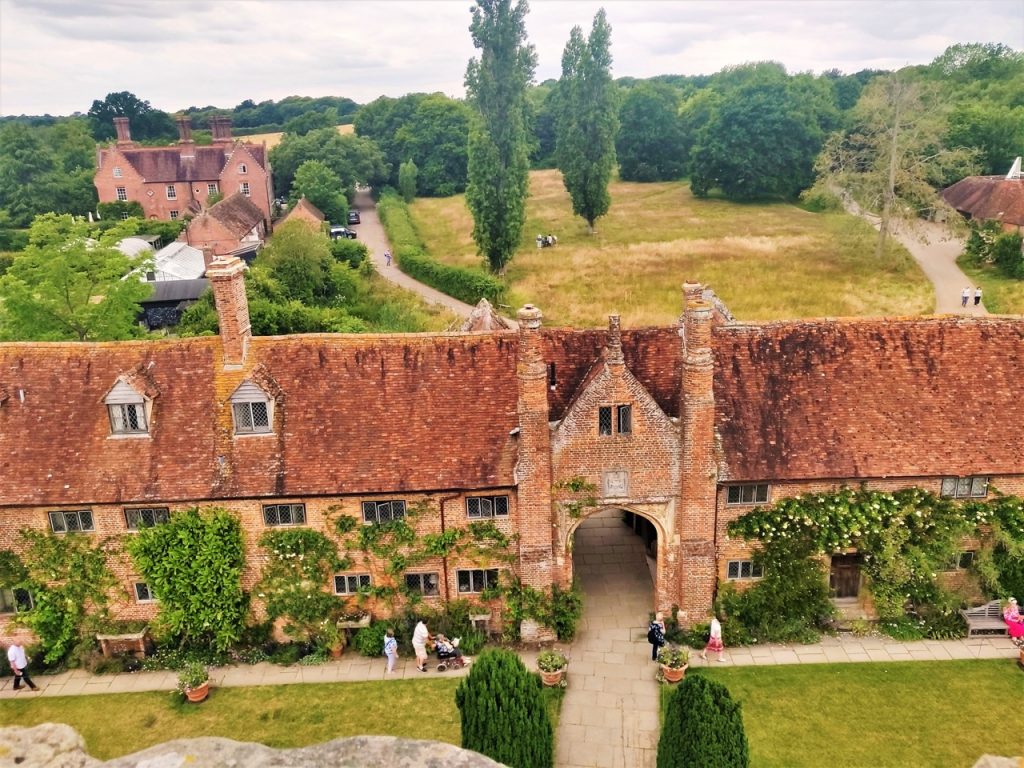
The Long Library- the Big room ,once part of the 16th century Baker home but later the Drawing room of the Nicholsons Large
With the regal Tower behind us we entered the Long Library- as it is called now. We were excited to be in the ‘Big Room’ of Sissinghurst – thus named by the Nicholsons and we were soon to discover Vita’s connection to the medieval Sissinghurst!
The Volunteer offered an explanation that one of Vita’s ancestor Thomas Sackville married Cecily Baker of the 16th century wealthy influential Baker family who had built it and ever since Harold discovered this fact, Vita developed a distinctive connexion to Sissinghurst. Thomas Sackville, 1st Earl of Dorset’s portrait is displayed in the Library too which was bought by Vita & Harold’s son Benedict- an art historian.
It was indeed a long room in the North side of Sissinghurst that was used as a Drawing room visited by eminent and powerful persons like Winston Churchill, Writer Virginia Woolf and Artist Rex Whistler….The grandeur of the room seems to be a reflection of Vita Sackville-West- Nicholson’s affluent background with her classic Knole look home – furniture, rugs, tapestries and memorabilia. Vita lost her inheritance as she was a girl!!
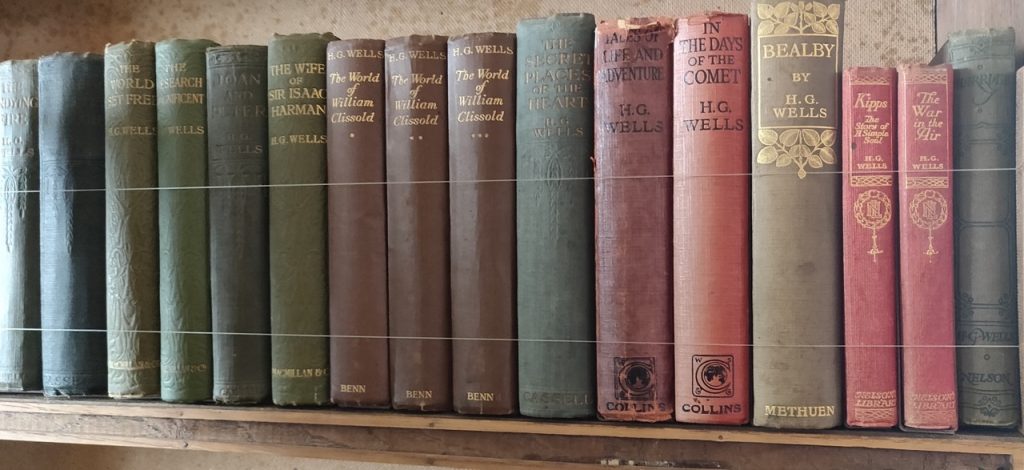
The bookshelf in the Long Library of the Nicholsons at Sissinghurst castle thar showed a liking for writer H G Wells Large
One end of the room held almost 4000 books and a large Writing desk and one cannot miss Vita’s beautiful portrait at 17 years by artist Philip de Lazlo. The Volunteer lady added that it had been in the Attic for several years as Vita hated her Victorian-look in the portrait!!
From Stables to a classic Drawing Room
Next, the Volunteer pointed out the ink and dye painting of Sissinghurst as it looked in 1760, a prison for 3000 French-men, during the Seven Years War depicting miserable condition of French prisoners!! We had earlier received a brochure with this painting and were asked to use the painting as a guide to walk around the garden where present day monument- remnants are marked with yellow!! I stepped into my Time machine to watch the farmhouse Stables and Saddle room being converted with genius into an attractive Drawing room by Nicholsons, a large window was added for natural light and a stone Fireplace reconstructed from the pieces of Elizabethan-ruins!! Vita’s portrait is now placed above this Fireplace. Additionally noticeable are- the 1750 AD expensive, painted Italian cupboard that is a wedding gift to the Nicholson couple and the laminated 1939 copy of Burlington monthly magazine.
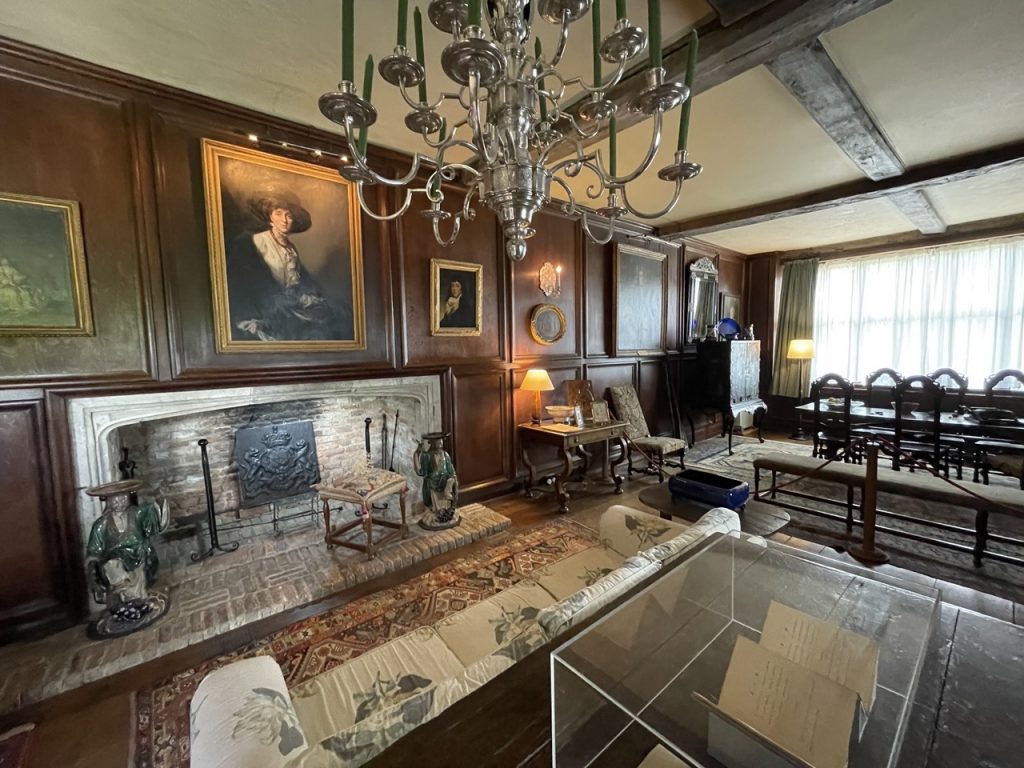
Writer-poetess Vita’s Victorian look portrait that she hid in the Attic for years, in the once Drawing room of the Nicholsons_ Large
More Spectacular Gardens of Sissinghurst
Having completed the tour of the monuments that formed the Nicholsons family home in the early 20th century we walked towards the popular Rose garden. My thoughts turned to Vita and Harold whose urge for literature, beauty and gardening transformed the 300 years old ruins of Sissinghurst Castle into spectacular gardens. They initially planted Rose, honey suckle, figs and vines everywhere that gradually added more chic variety of flowers. The Guide map read that the Rose garden had been a vegetable garden originally. With a circular green central area, the entire area was divided by Harold’s geometry into perfect rectangular paths garden!
Enjoying the hues and fragrance of the variety of Roses, next we headed for the Lime Walk– a long row of Lime trees with circular flower beds under each tree that led to more gardens ahead! A black chalk Board read-
As the Lime Walk transitions from Spring to Summer the bulbs die back earnestly leaving their foliage to feed the soil for the next phase to come.
We again passed the vivid colours Cottage garden on our left that had alluring views from the South Cottage bedrooms, to head for the Moat Walk. Subsequently we spotted the Nuttery on our map so named from the Kent area cobnuts or Hazelnuts planted there for ages and the Nicholsons discovered it amongst the ruins in 1930’s. Today it is a mystic woodland of trees, plants & flowers in shades of green; lime-yellow being the best!
The Moat of the Medieval House with a Moat
We swung onto the Moat Walk on our left which holds an arresting view of white Wisterias on one wall and a bed of yellow Azaleas on the opposite side and one agrees that planting climbers was Vita’s worthy idea! I recalled reading that it was in 1940’s that Vita won a 100 pound prize money for her poem The Garden that she used to craft this utopia! Far on our left side behind us stood the majestic Tower and the Apple orchard was on our left too, that had numerous roses against its Apple trees boughs- a unique idea of Vita again!
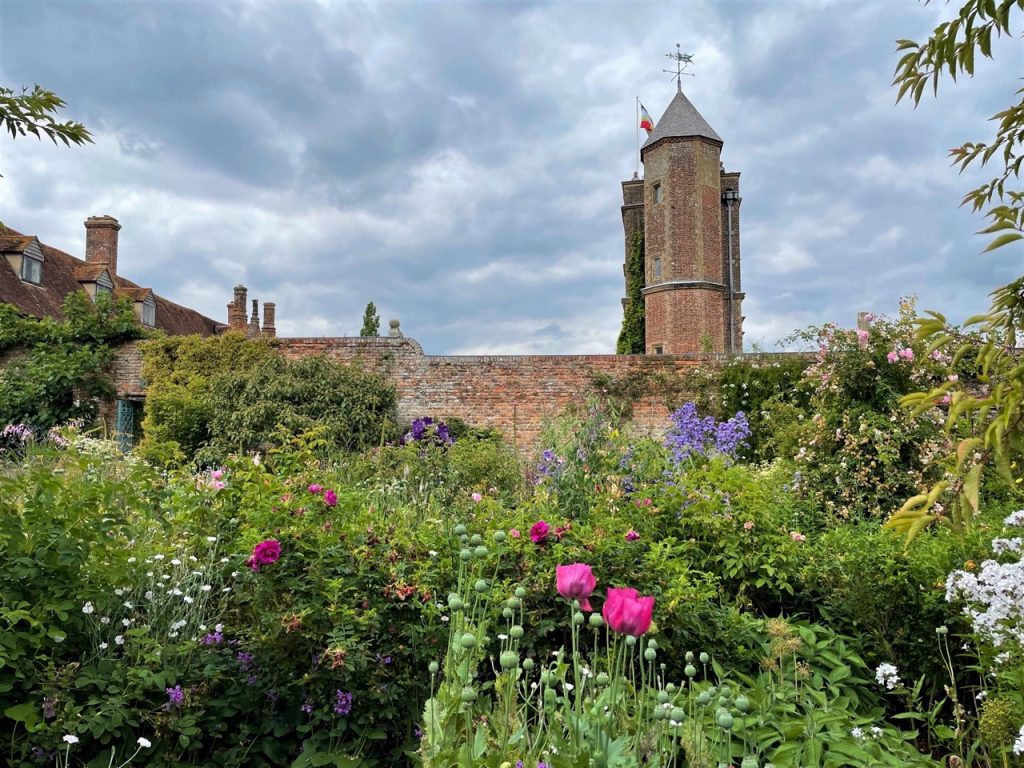
The Tower view from the Walled Garden created by Vita and Harol Nicholson to beautify Sissinghurst castle ruins! Large
It was fascinating to stand by the glittering water of the medieval Moat of the Sissinghurst Gardens that once surrounded the medieval house in the 12th century and was probably restored in the 16th century glorious Baker home!
Café and Spectacular Estate Walk
It was a long invigorating walk back to well-deserved Tea break at the Café outside through the Tower Entrance and the main Entrance. After browsing through the beautiful well, priced gift shop we selected a fridge magnet of the majestic Sissinghurst Castle and Garden. Past the Elizabethan era Barn we stepped out to admire the panoramic superlative landscaping of the Sissinghurst Estate. The interesting plaques names read- Estate Walk and Bird Hide (with binoculars path) for those whose ‘best friend is Nature!’
Walking back towards the car park we stopped by to photograph the red brick Oast House and Roundel built in the 19th Century but continued construction till 1966 as a Restaurant. Sometimes Exhibition are held here too. Oast houses are farm buildings in old Homes used for drying hops as part of brewing process for making Beer!
Au Revoir
We drove back with reminiscences of the glorious Sissinghurst Castle and Gardens- the excellent restored remains of a medieval Home by writer Vita and her husband Harold-Nicholson now well-maintained by the National Trust. The Stone Age, Iron Age habitants, the Romans and the Saxons mystic and historic amalgamation at Sissinghurst is engrossing! The kaleidoscopic vibrant flowers filled gardens create an enchanted effect for memories to cherish for years to come!
